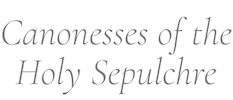Dear All,
Today we are sending you some different reflections on prayer. Inevitably they are very different, one from another, since there are countless different ways to pray. You will have your own way but maybe one of these will complement what you are already doing – If not, just enjoy the blessing:
‘A Blessing’ from Fire of Love.
May the Lord bless you,
May the Lord protect you & guide you,
May his strength uphold you,
His light shine upon you,
His peace surround you,
His love enfold you.
May the Lord bless you,
The Lord bless you,
The Lord bless you.
With our love
Prayer.
Prayer is like watching for the Kingfisher. All you can do is
Be there where he is likely to appear, and
Wait.
Often nothing much happens;
There is space, silence and
Expectancy.
No visible signs, only the
Knowledge that he’s been there
And may come again.
Seeing or not seeing cease to matter,
You have been prepared
But when you’ve almost stopped
Expecting it, a flash of brightness
Gives encouragement.
Ann Lewin
Speak, Lord, your servant is listening.
It is the silence of prayer that offers space for our lives too big and complex to be contained or explained by any words.
It is the silence of God that gives a home
to all the hopes, the fears, the fragments, the layers, the tangents, the tangles & the tearings.
And in the silence God holds us, all of us, and tells us
‘You are mine,
The light, the dark, the shadow,
The sun, the rain, the wind,
The rainbows of your lives.
Hold fast to that which is good.
Seek my presence
at the very centre of all that we are,
the living centre that makes the fullness of your humanity possible’
Contemplative Walking
Christine Valters Paintner describes the ancient and accessible contemplative practice of walking or moving slowly through the natural world as a way of connecting with God. This is clearly the “road not taken” by too many of us in the modern world, even though it shaped and sustained the faith of our ancestors for millennia. If you find it difficult to sustain a practice of seated meditation, I encourage you to begin by moving outdoors.
In the contemplative path we cultivate intimacy with Earth and her creatures, and we allow ourselves to fall in love with nature. It is one of my deepest beliefs that we will not be able to address the environmental crisis we currently face without this intimacy, without learning how to cherish nature, without love.
I encourage you to make time each day to be outside. One of the ways to do this is to go on a contemplative walk with an intentional and reverential heart.
There is something about getting our bodies out into the world, in close contact with trees, bushes, flowers, squirrels, pigeons, and crows, that can invigorate us and offer us new perspective on life. In the book of Jeremiah, God asks, “Do I not fill heaven and earth?” (Jeremiah 23:24). These walks are times to really experience that truth.
Contemplative walking does not necessarily mean walking slowly, although at its heart it is not a rushed activity. When we walk contemplatively, we give ourselves over to the experience. This is not walking for fitness. It is walking to immerse ourselves in an encounter with whatever is calling us in the moment.
As you begin a contemplative walk, allow a few moments simply to breathe and connect to your heart. Set an intention for this time to be as present as you can to what is happening both within and without. Begin walking, but see if you can release any expectations or destination. As you walk, imagine that with each step your feet are both blessing the ground and being blessed by it. Let your breath be long and slow. Bring your awareness to the earth monastery all around you.
Notice what draws your attention. Look for what shimmers or what the Japanese poet Basho called “a glimpse of the underglimmer.” Listen for the sounds of life around you. Even if you are walking through a city, pay attention to the rustle of the breeze, the caw of crows, or any subtle elements of creation singing their song.
Pause regularly simply to receive this gift. Breathe it in. Let it have some space in your heart. Then continue on until something else causes you to stop.
This is the whole of the practice: simply [moving], listening, and pausing. We practice presence so that we might cultivate our ability to really hear the voice of nature speaking to us. This sounds simple, and yet we so rarely make the time to develop this skill.
Tame Prayers
Most prayers are too tame,
pitying self while others act,
sitting by the pool and feeling lame.
Prayer is an explosion in the heart:
Crazy Noah building an ark,
Abraham bartering with the Lord,
Wild-eyed Isaac on the altar,
Jacob wrestling in the night,
Deborah leading a victory march,
Elijah calling down the rain,
Job taking God to court,
Ruth entreating, “Do not part,”
widows knocking on judges’ doors,
outcasts touching Jesus’ hem,
a Canaanite mother claiming crumbs,
Mary anointing the Guru’s feet:
Jesus crying – Why? My God, my God? –
Startled women at the empty tomb;
Paul in prison singing hymns,
John in exile dreaming dreams.
Prayer is action and retreat – wherever God and humans meet.
Kent Ira Groff
The French writer and philosopher, Voltaire, was right when he said that
There ought to be moments of tranquillity in great works.
It’s what Tennyson described in his poem Lucretius as
Divine Tranquillity, yearned after by the wisest of the wise …
The question for us, therefore, is this: Whatever great works we put our mind to, are we to be numbered among the wisest of the wise and yearn after such tranquillity? Prayer? Meditation? Mindfulness? Maybe … But for me, it’s often just about being still, like a boat on a calm sea, or a house perfectly reflected by a still shore. When we find it and give ourselves to it, tranquillity is enough of itself …

